


|
The Project Part 1: Part 2: Part 3:
|
12 August, 2005
|
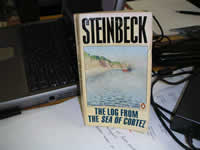 Inspiration 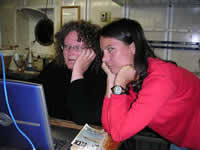 Fighting abject boredom on the way home 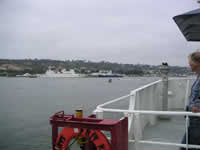 Coming into port 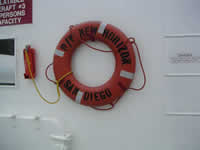 R/V New Horizon San Diego |
We arrive in San Diego at 1:00 pm this afternoon. We are counting the knots one by one, anxious to reach the docks. We will not be able to leave the ship until US customs and the agricultural authorities have cleared the ship. This morning I saw more dolphins and we cruised through a thick, “pea-soupy” red tide for several miles. I’ve seen a lot more floating plastic garbage; we just swept past a flotilla of half-deflated balloons, escaped from some sort of celebration. Momentarily, we will cross an invisible line into US waters.
The ship has cleared customs and our passports have been returned. The scientific equipment is being off-loaded. A few of us will stay on the ship tonight and try to change our plane tickets since we’ve arrived a day early.
More from The Log From the Sea of Cortez
What was the shape and size and color and tone of this little expedition? We slipped into a new frame and grew to be a part of it, related in some subtle way to the reefs and beaches, related to the little animals, to the stirring waters and the warm brackish lagoons. This trip had dimension and tone. It was a thing whose boundaries seeped through itself and beyond into some time and space that was more than all the Gulf and more than all our lives. Our fingers turned over stones and we saw life that was like our life.
What have the scientists on the New Horizon learned from their trips to the Gulf of California? (This is the third expedition.)
Last summer the water sampling and chemical analysis revealed something very interesting about the waters of the Sea of Cortez. The organism we study, Emiliania huxleyi, and other alkenone-producing phytoplankton living in surface waters, seem to grow without conventional fertilizers (nutrients) like nitrate and ammonia. We speculated that fertilizers required for their growth were obtained from the work of other phytoplankton that are capable of fixing nitrogen gas.
What’s a nitrogen-fixer?
• Nitrogen-fixers are plants that live on nitrogen taken directly from the air or soil.
• Most plants can’t do this because nitrogen is difficult to break down.
Nitrogen-fixers “eat” nitrogen and break it down into more digestible forms (into nitrate and ammonia) for other plants to use.
The nitrogen fixation process occurs on land, also. Peanuts, lupine and scotch broom are well-known nitrogen fixers. This same process occurs in the sea, but microscopic plants perform this task. They feed on nitrogen gas that has entered seawater from the atmosphere.
Last year, on the summer cruise to the Gulf, we detected evidence of nitrogen fixation from chemical analysis of the seawater. This summer, people on the scientific team who are experts in identifying small organisms microscopically have confirmed our chemical intuition. Our research into alkenones and what their chemistry can tell us about present and past ocean environments has been advanced a small but significant step forward!
(If you refer back to the August 06 journal, you will find information about the seasonal differences in nutrient levels in the Gulf.)
Math Problem:
The R/V New Horizon left San Diego with 43,589 gallons of diesel fuel. The ship burned 24,934 gallons of fuel during the trip. What percentage of the total amount of fuel did the ship use?
Trivia Tidbit of the Day
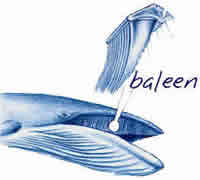 People who lived in what is now Norway were probably among the earliest whalers to seek out and kill whales in the sea. Norwegian rock carvings about 4,000 years old show a variety of whaling scenes. The Basque people of southern France and northern Spain established the first large whaling industry in Europe. During the 900's, the Basques began to hunt baleen whales in the Bay of Biscay, which lies west of France and north of Spain.
People who lived in what is now Norway were probably among the earliest whalers to seek out and kill whales in the sea. Norwegian rock carvings about 4,000 years old show a variety of whaling scenes. The Basque people of southern France and northern Spain established the first large whaling industry in Europe. During the 900's, the Basques began to hunt baleen whales in the Bay of Biscay, which lies west of France and north of Spain.
Whale blubber was cooked to make oil. The baleen, which is part of the filter feeding system in some whales, was used in such articles as corsets, dress hoops, and whips.
![]()
